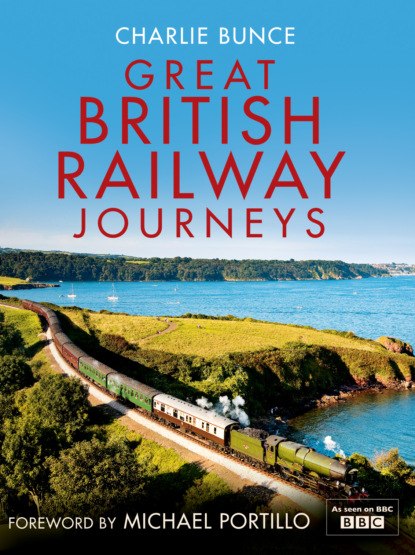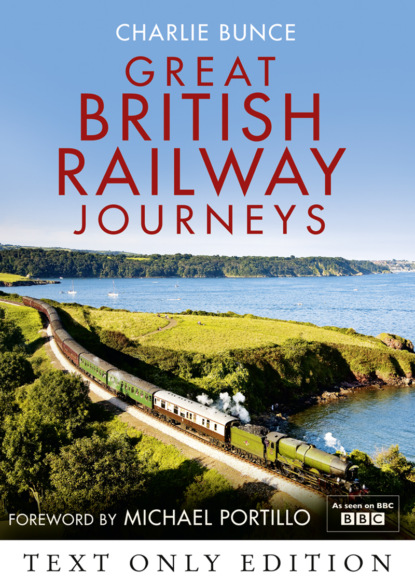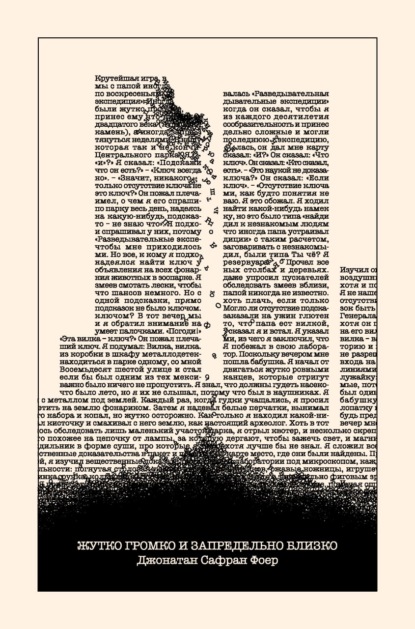
Текст
отзывы: 0 | рейтинг: 0
Great British Railway Journeys
Жанр:
Дом. семья. хобби
Язык:
Английский
Тип:
Текст
Год издания:
2019
Полная версия
Полная версия
1
2
Great British Railway Journeys
Michael Portillo
Charlie Bunce
The Sunday Times BestsellerA glorious insight into Britain over the last 150 years - its history, landscape and people - from the window of Britain’s many and magnificent railway journeys.Inspired by George Bradshaw, a 19th-century cartographer who mapped Britain’s railways as they sprung up around him, Charlie Bunce and Michael Portillo take a journey along nine classic British railway routes and surround themselves with the history, the charm and the people at the heart of the railways.More than just a practical mode of transport, Britain’s railways are richly representative and evocative of British society and how it has developed over the last 150 years. Symbols of progress and change, they tell of remarkable breakthroughs in technology, industry and travel. Iconic in their design they have both made a distinctive impact on Britain’s landscape and opened it up to millions of people who, through train journeys alone, became acquainted with wonderful new places and sights. And as fond staples of childhood experiences they evoke deep, memorable feelings of nostalgia, of holidays and home.Great British Train Journeys is a passionate, charming and insightful look at Britain from a window seat: a compelling read for all who look forward to travelling by train.
For Scarlett and Tallulah,
the light at the end of my every tunnel
Photolibrary
Contents
Cover (#uae5b5c50-e1fb-585b-97b6-cea737077f27)
Title Page (#u133aeb0d-a5cf-5a3a-94db-2d812038f521)
FOREWORD: BY MICHAEL PORTILLO
INTRODUCTION: BY CHARLIE BUNCE
JOURNEY 1: COTTONOPOLIS AND THE RAILWAYS - From Liverpool to Scarborough
JOURNEY 2: THE HOLIDAY LINE - From Swindon to Penzance
JOURNEY 3: BRINGING BEER DOWN SOUTH - From Buxton to London
JOURNEY 4: OPENING UP VICTORIAN BRITAIN - From Preston to Edinburgh
JOURNEY 5: THE MAIL TRAIN - From Ledbury to Holyhead
JOURNEY 6: THE TAMING OF THE HIGHLANDS - From Ayr to Skye
JOURNEY 7: RAILWAYS MADE FOR TRADE - From Newcastle to Melton Mowbray
JOURNEY 8: COAST TO COAST - From Brighton to Cromer
JOURNEY 9: BORDER LINES - From London to Hastings
INDEX
ACKNOWLEDGEMENTS
About the Authors
Copyright
About the Publisher (#u71cc6a85-d5ee-53ed-80fe-6ab04433aed6)
Photolibrary
FOREWORD
By Michael Portillo
Like most people, I thought travel an adventure when I was a child, and most of those adventures were by train. There were still some steam trains around for me. There was a tank engine-hauled service from Belmont to Harrow and Wealdstone, close to where I grew up. My eldest brother, Charles, would take me on the ‘Belmont Rattler’, and I remember the panting engine, the smoke and my excitement.
For summer holidays we would go to the Isle of Wight by electric train from Waterloo, but from Ryde we would pick up the steam service along the island’s east coast. The tunnel beneath the Boniface Downs would fill with the pungent stench of steam locomotive just before we pulled into Ventnor.
Then there was the annual excursion to my mother’s hometown of Kirkcaldy. My parents were not well off, so we took the overnight train without sleeper reservations, travelling second class, sitting upright, sustained by Lucozade and peanut butter sandwiches. On at least one occasion it took 13 hours, and the service was known, to our sardonic amusement even then, as the Starlight Special.
After childhood, trains became mere tools for me. As a politician I visited most places to campaign, cut a ribbon or make a speech. The train got me there, or got me there late. The glamour was gone, and I was all too ready to criticise the lateness, the absence of the refreshment trolley or the failure of the air conditioning.
Now I find myself drawn to the railways once again. Making the two series of Great British Railway Journeys has meant spending almost 100 days travelling the length and breadth of the country and has brought back for me the idea of railway journey as adventure. Catching the train has been a key part of the experience, not merely a chore.
I was always travelling to see. I journeyed with curiosity and optimism, and I was rarely disappointed.
My guide was a Victorian called George Bradshaw. In 1839 he started producing railway timetables and then a handbook to journeying through Britain by train. Even though I have travelled most of the routes before, this book shone an endlessly fascinating light on everywhere I visited. I have studied the Victorian period at school and university, but no document that I have read before is quite as revealing of the Victorian outlook as this travel guide.
Former minister Michael Portillo revisits his love of railways.
© Steve Peskett
Bradshaw’s generation was highly excited by its central role in a world that was moving forward at an exhilarating pace. His wonder and pride spill from every page. Enthusiastic, patriotic, opinionated, he writes in an era unrestrained by egalitarianism, let alone political correctness. His age values reason, experimentation and excellence. It is serious and largely unsentimental. For Bradshaw there was no shame in imperialism, no consideration of taste to restrain his bombast. Manchester manufacturers, he records with pride, could import the cotton crop from India, spin it and export textiles that would then undercut local production in India. London, he says, is the greatest city that exists, or has ever existed. He is right that London stood at the heart of an empire that exceeded that of the Pharaohs or Caesars, and considering Britain’s mastery of technology there was no serious competition to be found anywhere in the world’s history.
Bradshaw’s first enthusiasm was for canals, a prodigious achievement in themselves with a great impact on business. But the railways were faster and more versatile. Above all they were for the masses. Without large numbers of passengers they were uneconomic. They altered the geography of Britain by making places accessible, and they transformed the social landscape because people of modest means could travel.
The speed of the change is difficult even for us to grasp, because although the mobile phone and computer have led to a revolution over the last 20 years, modern-day Britain doesn’t undergo physical change as fast as Victorian Britain did. The world’s first intercity line opened between Liverpool and Manchester in 1830. Twenty years later over 6,000 miles of track had been laid, reaching all but the remotest parts of the country. Railways sprang up everywhere. Some important lines were built in their entirety in just two years. Although steam engines were used in construction, most of the work was done by hand. Thousands of navvies occupied camps along the route, and dug the cuttings and raised up the stones for the viaducts. We would have to visit modern Shanghai, perhaps, to gain any understanding of the speed of change and the scale of the undertaking.
The handbook’s itineraries follow the tracks. Towns are listed not alphabetically but in their order along the main lines and branch lines. I have been asked a lot whether I didn’t find that many of Bradshaw’s routes have gone. Some have, of course. But I think I was more struck but the degree of continuity between then and now. Britain today, despite its post-war motorways, depends upon an infrastructure laid down by the Victorians. They built to last, and often grandly. As the refurbishment of St Pancras has shown, the best thing to be done with a Victorian building is simply to undo the damage of decades caused by smoke and rain and, particularly, cheapskate makeovers. Stand on Waterloo Bridge with Bradshaw’s book and you may find that the finest buildings today are still the ones that he picked out: Saint Paul’s cathedral, Somerset House and Parliament.
That gives a clue as to why travelling with Bradshaw is still useful today. Not to despise the work of later generations, but to appreciate the magnificent and formative legacy of that era. It led me to explore places that are no longer in fashion, like Scarborough and Weston-super-Mare, and to hunt for trades that were big in his day, like Walsall saddlers, Bristol glass blowers and Denton hatters.
I never intended my journeys to be purely nostalgic, and they have not been. British cities are rejuvenating themselves and British resorts cling on or fight back. There is vibrancy and enthusiasm wherever I have been. The Britain of today would be ethnically, culturally and socially unrecognisable to George Bradshaw. I hope that in my journeys I portray Britain as it is.
Michael Portillo
2010
INTRODUCTION
By Charlie Bunce
Photolibrary
There are some ideas for television programmes that, when you hear about them, you just know in your bones are destined for success. That was certainly the case when I was asked to produce a new series being developed for the BBC which was then called Adventures with Bradshaw.
The idea emerged from a brainstorming session with Liam Keelan, BBC Controller of Daytime and Camilla Lewis, Head of Factual Features at talkbackTHAMES. Liam was keen to find a programme that would work at 6.30 p.m. on BBC2. He wanted a travelogue by train, which had an historical angle. Liam knew the railways were rolling out across Britain during one of the most exciting and rapidly advancing periods of history when ordinary lives were being irrevocably changed.
Camilla had long been obsessed with finding a new way of investigating our social history. Her brother-in-law, an antiquarian bookseller slotted the last piece of the puzzle in place when he told her that George Bradshaw, the man who famously started producing monthly railway timetables in the mid-nineteenth century had also published a guide-book on travelling across the country by train.
After a £500 investment, a battered and broken copy of Bradshaw’s guide arrived at the office. A drab brown cover was misleading as its contents were anything but dull and dreary. Its well-thumbed pages offered a remarkable insight into the life and times of Victorian Britain.
The more I read Bradshaw’s guide, the more I could hear his voice. As I understood him better I began to see the age in which he lived and worked, and to see what excited him and why. His minute observations and comments gave me a sense of Victorian Britain different from anything I’d read before.
His rich words conveyed to us another age. A section about Sandwich in Kent is an ideal example. ‘The traveller, on entering this place, beholds himself in a sort of Kentish Herculaneum, a town of the martial dead. He gazes around him and looks upon the streets and edifices of a bygone age. He stares up at the beetling stories of the old pent-up buildings as he walks and peers curiously through latticed windows into the vast low-roofed, heavy-beamed, oak-panelled rooms of days he has read of in old plays.’
How could you not want to visit Sandwich and find what he had seen. Beyond lyrical descriptions, Bradshaw deposited on his pages a wealth of information about where his readers should stay, how to get money, what day the market took place, local sights of interest and on occasion where to sit to get the best view from the train. He revelled in detail, giving the span and height of bridges to the foot, or the length of station platforms. He loudly and proudly celebrated every British success.
George Bradshaw combined his enthusiasm for cartography with a passion for trains.
© National Portrait Gallery, London
Bradshaw described how the railways were a great leveller, literally and metaphorically. While the land was planed so the trains could run on as few inclines as possible, the barriers that divided a class-ridden society were at the same time pared down.
For the enterprising, railways represented a golden opportunity. Although they were initially seen as a way of transporting freight, it wasn’t long before moving people by rail was just as important, sometimes even more so. Commerce spread across neighbourhoods and regions. Trades that were once restricted to narrow localities could now take advantage of markets worldwide. The notion of commuting was born. Holidays, once the province of the rich, came within grasp of ordinary people.
It is difficult to imagine now just how fundamentally life changed and the speed at which those transformations came about. Where railway stations were made, hamlets mushroomed into towns while those settlements that were leapfrogged by railway lines were left in the doldrums.
Michael Portillo
Charlie Bunce
The Sunday Times BestsellerA glorious insight into Britain over the last 150 years - its history, landscape and people - from the window of Britain’s many and magnificent railway journeys.Inspired by George Bradshaw, a 19th-century cartographer who mapped Britain’s railways as they sprung up around him, Charlie Bunce and Michael Portillo take a journey along nine classic British railway routes and surround themselves with the history, the charm and the people at the heart of the railways.More than just a practical mode of transport, Britain’s railways are richly representative and evocative of British society and how it has developed over the last 150 years. Symbols of progress and change, they tell of remarkable breakthroughs in technology, industry and travel. Iconic in their design they have both made a distinctive impact on Britain’s landscape and opened it up to millions of people who, through train journeys alone, became acquainted with wonderful new places and sights. And as fond staples of childhood experiences they evoke deep, memorable feelings of nostalgia, of holidays and home.Great British Train Journeys is a passionate, charming and insightful look at Britain from a window seat: a compelling read for all who look forward to travelling by train.
For Scarlett and Tallulah,
the light at the end of my every tunnel
Photolibrary
Contents
Cover (#uae5b5c50-e1fb-585b-97b6-cea737077f27)
Title Page (#u133aeb0d-a5cf-5a3a-94db-2d812038f521)
FOREWORD: BY MICHAEL PORTILLO
INTRODUCTION: BY CHARLIE BUNCE
JOURNEY 1: COTTONOPOLIS AND THE RAILWAYS - From Liverpool to Scarborough
JOURNEY 2: THE HOLIDAY LINE - From Swindon to Penzance
JOURNEY 3: BRINGING BEER DOWN SOUTH - From Buxton to London
JOURNEY 4: OPENING UP VICTORIAN BRITAIN - From Preston to Edinburgh
JOURNEY 5: THE MAIL TRAIN - From Ledbury to Holyhead
JOURNEY 6: THE TAMING OF THE HIGHLANDS - From Ayr to Skye
JOURNEY 7: RAILWAYS MADE FOR TRADE - From Newcastle to Melton Mowbray
JOURNEY 8: COAST TO COAST - From Brighton to Cromer
JOURNEY 9: BORDER LINES - From London to Hastings
INDEX
ACKNOWLEDGEMENTS
About the Authors
Copyright
About the Publisher (#u71cc6a85-d5ee-53ed-80fe-6ab04433aed6)
Photolibrary
FOREWORD
By Michael Portillo
Like most people, I thought travel an adventure when I was a child, and most of those adventures were by train. There were still some steam trains around for me. There was a tank engine-hauled service from Belmont to Harrow and Wealdstone, close to where I grew up. My eldest brother, Charles, would take me on the ‘Belmont Rattler’, and I remember the panting engine, the smoke and my excitement.
For summer holidays we would go to the Isle of Wight by electric train from Waterloo, but from Ryde we would pick up the steam service along the island’s east coast. The tunnel beneath the Boniface Downs would fill with the pungent stench of steam locomotive just before we pulled into Ventnor.
Then there was the annual excursion to my mother’s hometown of Kirkcaldy. My parents were not well off, so we took the overnight train without sleeper reservations, travelling second class, sitting upright, sustained by Lucozade and peanut butter sandwiches. On at least one occasion it took 13 hours, and the service was known, to our sardonic amusement even then, as the Starlight Special.
After childhood, trains became mere tools for me. As a politician I visited most places to campaign, cut a ribbon or make a speech. The train got me there, or got me there late. The glamour was gone, and I was all too ready to criticise the lateness, the absence of the refreshment trolley or the failure of the air conditioning.
Now I find myself drawn to the railways once again. Making the two series of Great British Railway Journeys has meant spending almost 100 days travelling the length and breadth of the country and has brought back for me the idea of railway journey as adventure. Catching the train has been a key part of the experience, not merely a chore.
I was always travelling to see. I journeyed with curiosity and optimism, and I was rarely disappointed.
My guide was a Victorian called George Bradshaw. In 1839 he started producing railway timetables and then a handbook to journeying through Britain by train. Even though I have travelled most of the routes before, this book shone an endlessly fascinating light on everywhere I visited. I have studied the Victorian period at school and university, but no document that I have read before is quite as revealing of the Victorian outlook as this travel guide.
Former minister Michael Portillo revisits his love of railways.
© Steve Peskett
Bradshaw’s generation was highly excited by its central role in a world that was moving forward at an exhilarating pace. His wonder and pride spill from every page. Enthusiastic, patriotic, opinionated, he writes in an era unrestrained by egalitarianism, let alone political correctness. His age values reason, experimentation and excellence. It is serious and largely unsentimental. For Bradshaw there was no shame in imperialism, no consideration of taste to restrain his bombast. Manchester manufacturers, he records with pride, could import the cotton crop from India, spin it and export textiles that would then undercut local production in India. London, he says, is the greatest city that exists, or has ever existed. He is right that London stood at the heart of an empire that exceeded that of the Pharaohs or Caesars, and considering Britain’s mastery of technology there was no serious competition to be found anywhere in the world’s history.
Bradshaw’s first enthusiasm was for canals, a prodigious achievement in themselves with a great impact on business. But the railways were faster and more versatile. Above all they were for the masses. Without large numbers of passengers they were uneconomic. They altered the geography of Britain by making places accessible, and they transformed the social landscape because people of modest means could travel.
The speed of the change is difficult even for us to grasp, because although the mobile phone and computer have led to a revolution over the last 20 years, modern-day Britain doesn’t undergo physical change as fast as Victorian Britain did. The world’s first intercity line opened between Liverpool and Manchester in 1830. Twenty years later over 6,000 miles of track had been laid, reaching all but the remotest parts of the country. Railways sprang up everywhere. Some important lines were built in their entirety in just two years. Although steam engines were used in construction, most of the work was done by hand. Thousands of navvies occupied camps along the route, and dug the cuttings and raised up the stones for the viaducts. We would have to visit modern Shanghai, perhaps, to gain any understanding of the speed of change and the scale of the undertaking.
The handbook’s itineraries follow the tracks. Towns are listed not alphabetically but in their order along the main lines and branch lines. I have been asked a lot whether I didn’t find that many of Bradshaw’s routes have gone. Some have, of course. But I think I was more struck but the degree of continuity between then and now. Britain today, despite its post-war motorways, depends upon an infrastructure laid down by the Victorians. They built to last, and often grandly. As the refurbishment of St Pancras has shown, the best thing to be done with a Victorian building is simply to undo the damage of decades caused by smoke and rain and, particularly, cheapskate makeovers. Stand on Waterloo Bridge with Bradshaw’s book and you may find that the finest buildings today are still the ones that he picked out: Saint Paul’s cathedral, Somerset House and Parliament.
That gives a clue as to why travelling with Bradshaw is still useful today. Not to despise the work of later generations, but to appreciate the magnificent and formative legacy of that era. It led me to explore places that are no longer in fashion, like Scarborough and Weston-super-Mare, and to hunt for trades that were big in his day, like Walsall saddlers, Bristol glass blowers and Denton hatters.
I never intended my journeys to be purely nostalgic, and they have not been. British cities are rejuvenating themselves and British resorts cling on or fight back. There is vibrancy and enthusiasm wherever I have been. The Britain of today would be ethnically, culturally and socially unrecognisable to George Bradshaw. I hope that in my journeys I portray Britain as it is.
Michael Portillo
2010
INTRODUCTION
By Charlie Bunce
Photolibrary
There are some ideas for television programmes that, when you hear about them, you just know in your bones are destined for success. That was certainly the case when I was asked to produce a new series being developed for the BBC which was then called Adventures with Bradshaw.
The idea emerged from a brainstorming session with Liam Keelan, BBC Controller of Daytime and Camilla Lewis, Head of Factual Features at talkbackTHAMES. Liam was keen to find a programme that would work at 6.30 p.m. on BBC2. He wanted a travelogue by train, which had an historical angle. Liam knew the railways were rolling out across Britain during one of the most exciting and rapidly advancing periods of history when ordinary lives were being irrevocably changed.
Camilla had long been obsessed with finding a new way of investigating our social history. Her brother-in-law, an antiquarian bookseller slotted the last piece of the puzzle in place when he told her that George Bradshaw, the man who famously started producing monthly railway timetables in the mid-nineteenth century had also published a guide-book on travelling across the country by train.
After a £500 investment, a battered and broken copy of Bradshaw’s guide arrived at the office. A drab brown cover was misleading as its contents were anything but dull and dreary. Its well-thumbed pages offered a remarkable insight into the life and times of Victorian Britain.
The more I read Bradshaw’s guide, the more I could hear his voice. As I understood him better I began to see the age in which he lived and worked, and to see what excited him and why. His minute observations and comments gave me a sense of Victorian Britain different from anything I’d read before.
His rich words conveyed to us another age. A section about Sandwich in Kent is an ideal example. ‘The traveller, on entering this place, beholds himself in a sort of Kentish Herculaneum, a town of the martial dead. He gazes around him and looks upon the streets and edifices of a bygone age. He stares up at the beetling stories of the old pent-up buildings as he walks and peers curiously through latticed windows into the vast low-roofed, heavy-beamed, oak-panelled rooms of days he has read of in old plays.’
How could you not want to visit Sandwich and find what he had seen. Beyond lyrical descriptions, Bradshaw deposited on his pages a wealth of information about where his readers should stay, how to get money, what day the market took place, local sights of interest and on occasion where to sit to get the best view from the train. He revelled in detail, giving the span and height of bridges to the foot, or the length of station platforms. He loudly and proudly celebrated every British success.
George Bradshaw combined his enthusiasm for cartography with a passion for trains.
© National Portrait Gallery, London
Bradshaw described how the railways were a great leveller, literally and metaphorically. While the land was planed so the trains could run on as few inclines as possible, the barriers that divided a class-ridden society were at the same time pared down.
For the enterprising, railways represented a golden opportunity. Although they were initially seen as a way of transporting freight, it wasn’t long before moving people by rail was just as important, sometimes even more so. Commerce spread across neighbourhoods and regions. Trades that were once restricted to narrow localities could now take advantage of markets worldwide. The notion of commuting was born. Holidays, once the province of the rich, came within grasp of ordinary people.
It is difficult to imagine now just how fundamentally life changed and the speed at which those transformations came about. Where railway stations were made, hamlets mushroomed into towns while those settlements that were leapfrogged by railway lines were left in the doldrums.
1
2
Другие книги автора:
Популярные книги















